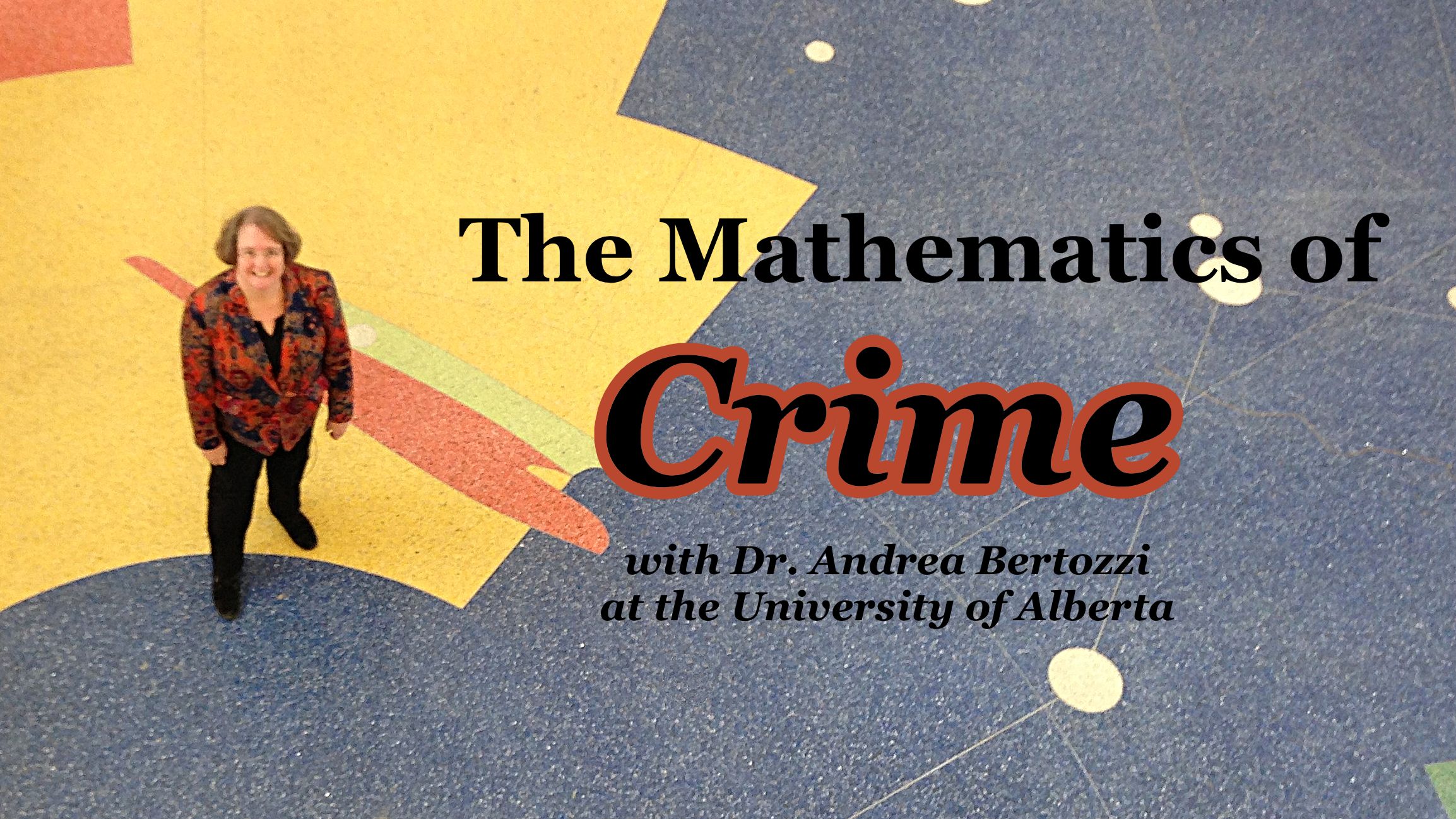Dr. Andrea Bertozzi from the Department of Mathetmatical Sciences at UCLA, visited the University of Alberta last night to give a talk entitled, “The Mathematics of Crime”. I’ve collected a number of interesting notes and links if you’d like to follow-up on her talk.
Dr. Bertozzi’s recent work culminated in a spinoff company called PredPol, which develops software used to predict the locations of crime-based “hotspots”, where increased police enforcement can be deployed to help prevent crimes. The technology is a far cry from the technology used in Minority Report because it can’t predict the behaviour of individual criminals or predict specific crimes, but because of its statistical nature it has been able to reduce to total number of crimes. In 2011, the Santa Cruz Police Department reported a 27% reduction in crime from 2011 after implementing PredPol. Due to its success, Bertozzi and her peers have been profiled nationwide, including a very informative video by NBC.
Dr. Bertozzi’s work began in 2005, when her interest in a topic called “Predictive Policing” began. Using existing models to predict earthquakes and aftershocks, Dr. Bertozzi, along with Dr. Jeffery Brantingham (Anthropology UCLA), Dr. George Tita (Criminology, UC Irvine) and Dr. Lincoln Chayes (Mathematics UCLA) wrote a paper entitled “A Statistical Model of Criminal Behaviour” (link). Using discrete mathematical modelling, a number of research papers on the topic of crime have resulted: Nonlinear Patterns in Urban Crime: Hotspots, Bifurcations, and Suppression (link) details the growth and movement of criminal hot spots (which look and behave suspiciously similar to magnetic domains in Ising Models); Adaptation of an Animal Territory Model to Street Gang Spatial Patterns in Los Angeles (link) ties migration patterns and territory of coyotes in Yellowstone Park to gang territories in Los Angeles; and Reconstruction of Missing Data in Social Networks Based on Temporal Patterns of Interactions (link) shows methods of reducing criminal suspects mathematically based on their locations and interactions with nearby gangs.
Overall, the talk was very informative and well presented, and it made me consider aspects of my neighbourhood, like graffiti and past crimes, on how criminal behaviour can be predicted.
